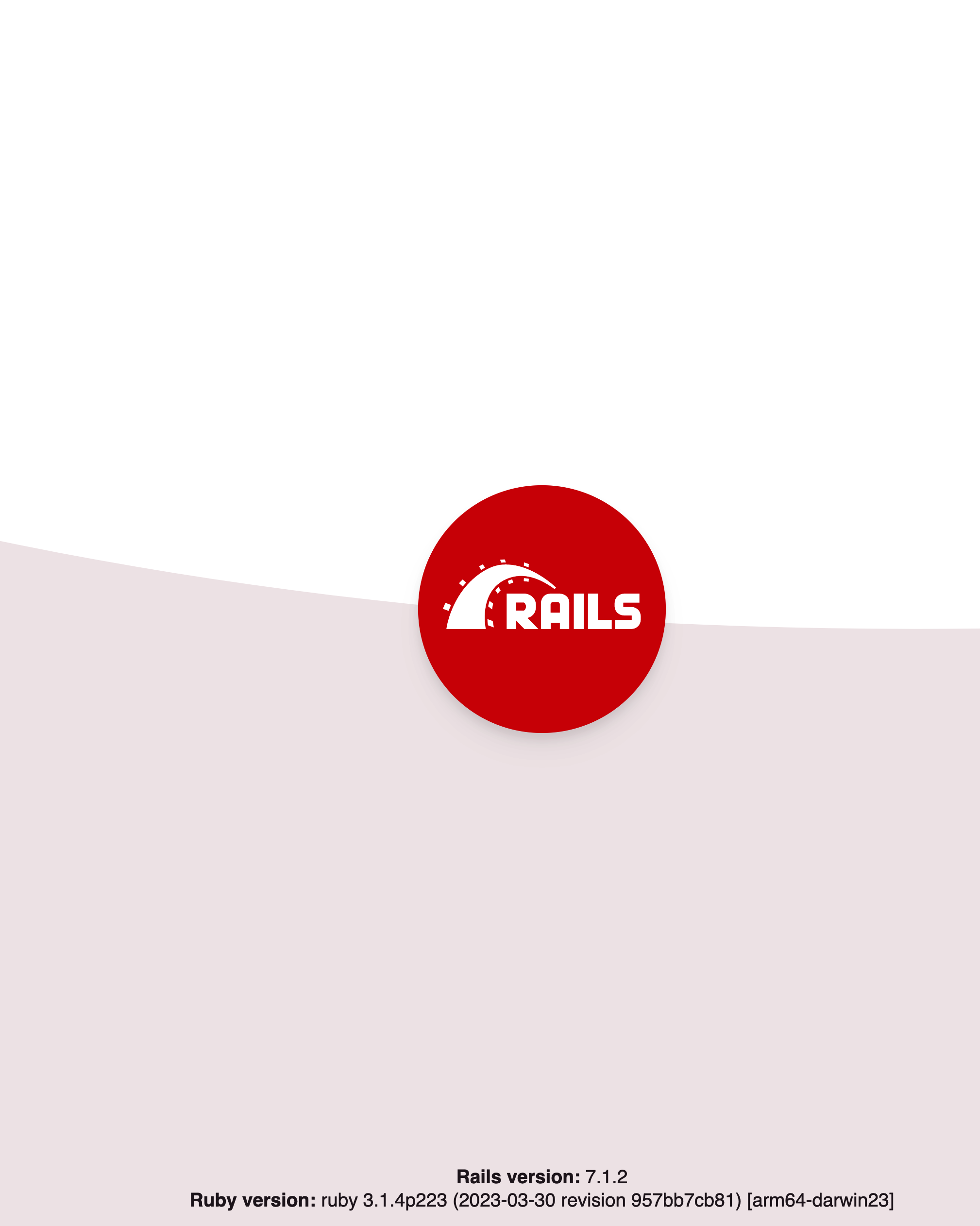Creating a Rails 7 app is an easy thing to do from the command line.
rails new devise-practice-1
After it’s been created, starting the rails server is also very easy to do.
cd devise-practice-1
rails s
This spins up the server (which is enabled by the software called Puma; You can look into it if you want to, but it’s not necessary; I’ve never had to learn about Puma and I’ve been coding for many years; Eventually I will, but not today)
Now open a browser and go to localhost:3000.
As of December 2023, I see a page like this:

To fix this I click the “Create database” button and now I see

This page is the default root path.
It is possible to display something besides this page by adding a controller with an action and updating the routes file.
Generate a Controller with an Index action
Kill the server by typing ctrl-c in the command line (the Terminal app)
In a second or two, the server will stop running.
In the same command line generate a new controller with an index action all at the same time
### g is short for generate
rails g controller Welcome index
### rails generate controller Welcome index
This creates the following output in the command line (yours may look a little different, buy you’ll definitely have at least these):
create app/controllers/welcome_controller.rb
route get 'welcome/index'
create app/views/welcome
create app/views/welcome/index.html.erb
invoke helper
create app/helpers/welcome_helper.rb
The last thing we need to do to change the default root path is update the routes file.
Update the routes file
In your app, navigate to devise-practice-1/config/routes.rb and open it
delete the line showing get 'welcome/index' and update it to look like this:
Rails.application.routes.draw do
root to: "welcome#index"
end
Save the file (if you don’t already have “auto-save” turned on), and start the server again.
You will see a different page than the one before.
Conclusion
That’s a quick example for creating a new controller, adding an action (index) and updating the routes file to re-direct to a new root path.
If you want to update what’s on the page, a good starting place would be to navigate to devise-practice-1/app/views/welcome/index.html.erb and you can add some HTML there. But that’s beyond the scope of this article.
Thanks for reading. Happy coding.